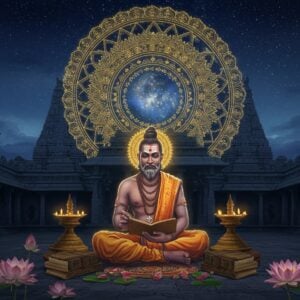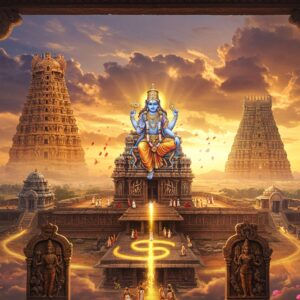
Hindu goddesses hold a significant place in Indian art and architecture, embodying diverse facets of divine feminine power and wisdom. They are not merely religious figures but also profound sources of inspiration, deeply influencing artistic expressions across various mediums.
Commonly Depicted Goddesses
- Durga: The warrior goddess, a symbol of strength and protection, triumphs over evil. She is often depicted with multiple arms, each wielding a divine weapon, while majestically seated on a lion or tiger, her vahana.
- Lakshmi: The goddess of prosperity and good fortune, Lakshmi’s wisdom brings abundance and blessings. She is often portrayed seated or standing on a lotus flower, a symbol of purity and spiritual awakening, holding gold coins or a pot overflowing with riches.
- Parvati/Uma: Representing divine feminine power (Shakti), Parvati is the feminine half of Shiva. In South India, she is revered as Uma, embodying the roles of mother, queen, and the source of divine feminine energy. Her depictions often emphasize her beauty, grace, and connection to nature.
- Saraswati: As the goddess of learning, music, and the arts, Saraswati inspires creativity and knowledge. She is often depicted playing the vina, a traditional Indian stringed instrument, with prayer beads and scriptures in her other hands, symbolizing her connection to wisdom and spiritual practice.
- Kali: A fierce and powerful goddess, Kali destroys demonic forces and represents liberation from the cycle of birth and death. Her depictions are often dramatic, emphasizing her transformative power and connection to time and change.
Representation in Art and Architecture
- Temple Sculpture: Hindu temples across India showcase intricate sculptures of various deities, including goddesses. These sculptures are integral to the temple’s architecture, both aesthetically and spiritually, and are dedicated to different deities within the temple complex. Explore the architecture of Hindu temples further in our detailed guide.
- Idealized Forms: Goddesses are often depicted with idealized features that embody Indian ideals of feminine beauty and spiritual purity. These features can include narrow waists, broad hips, rounded breasts, and expressive, lotus-petal-shaped eyes, reflecting the divine grace and allure of these powerful figures. For those seeking to bring the divine presence into their homes, Poojn.in offers a wide selection of beautifully crafted deity sculptures.
- Symbolic Attributes: Deities are often portrayed with multiple limbs and heads, signifying their immense power, divine abilities, and multifaceted nature. They also carry symbolic objects, such as weapons, musical instruments, prayer beads, and lotuses, that represent their specific attributes, domains, and the deeper philosophical concepts they embody. Learn more about the symbolism in traditional Hindu architecture here.
- Processional Images: Bronze sculptures of goddesses like Parvati were created specifically for temple processions, adorned with vibrant textiles, fragrant flowers, and exquisite jewelry. These processional images served as a focal point for community devotion and celebration, bringing the divine presence directly into the lives of the people. Discover the various styles of Hindu architecture and their unique features.
- Modern Interpretations: Contemporary artists, such as Manjit Bawa, continue to draw inspiration from traditional imagery of Hindu deities, including goddesses. They infuse their unique artistic vision while respecting the rich iconography and symbolism, creating vibrant and evocative works that resonate with modern audiences. If you are interested in exploring contemporary interpretations of Hindu goddesses, browse the exquisite selection of murtis and sculptures available at Poojn.in.
Hindu art and architecture are inextricably linked with religion, with temples serving as sacred spaces to honor various deities. The depiction of goddesses in these spaces reflects the religion’s profound goals of spiritual enlightenment, righteous living, love, compassion, and prosperity.


